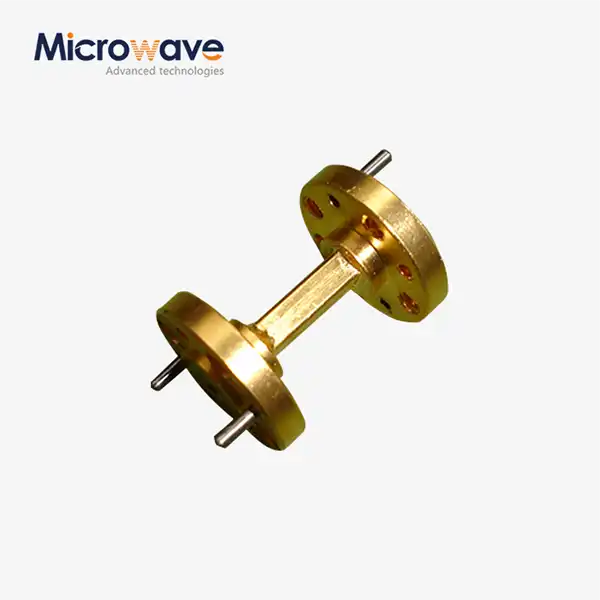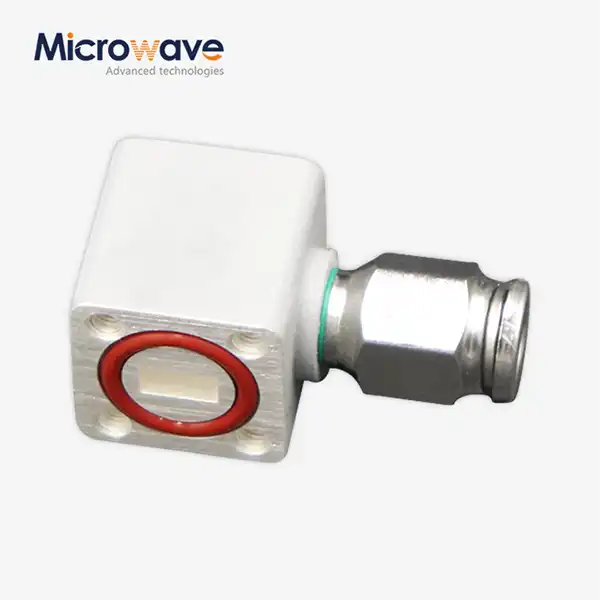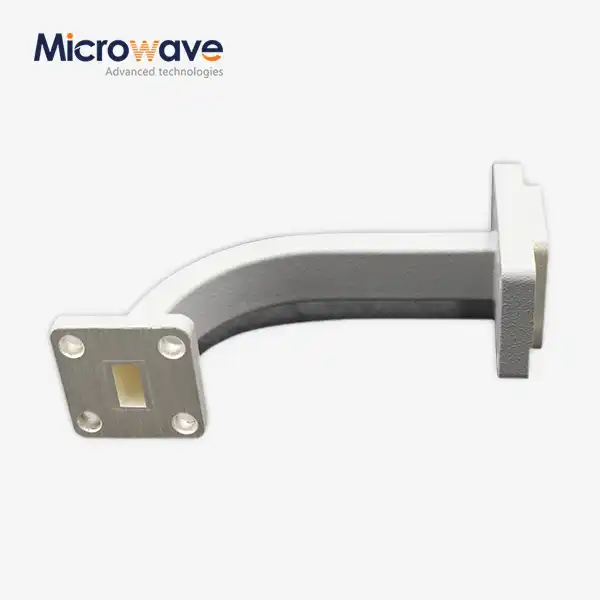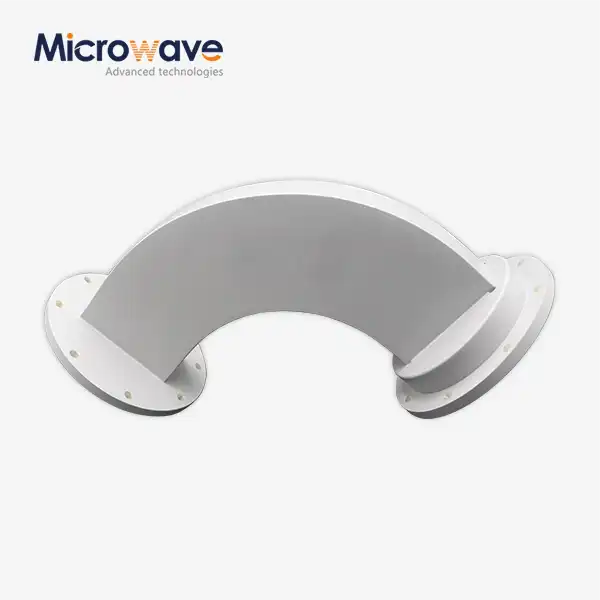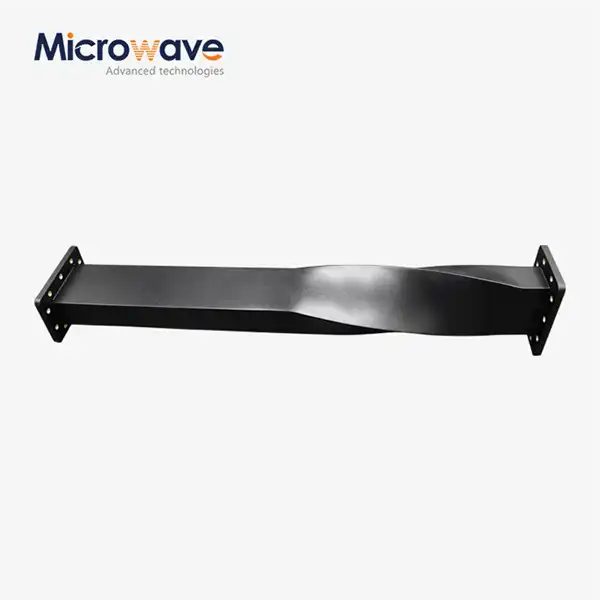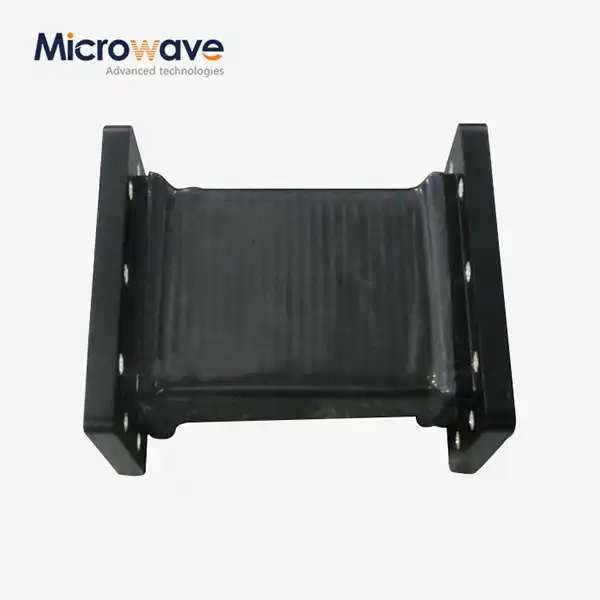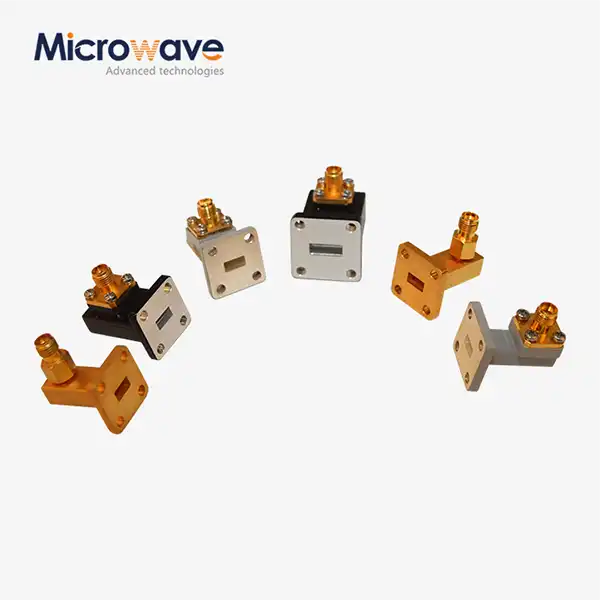High-Gain, Low-Loss: The Rise of Conical Horn Lens Antennas
In the rapidly evolving landscape of microwave and millimeter-wave communications, the Conical Horn Lens Antenna has emerged as a revolutionary solution that addresses the critical demands of modern high-frequency applications. This sophisticated antenna technology combines the directional properties of conical horns with the focusing capabilities of precision lenses, delivering exceptional performance characteristics that have transformed industries ranging from satellite communications to aerospace defense systems. The Conical Horn Lens Antenna represents a significant advancement in antenna design, offering superior gain performance, minimal signal loss, and remarkable directional precision that traditional antenna configurations simply cannot match.
Advanced Engineering Principles Behind Conical Horn Lens Antennas
Fundamental Design Architecture and Signal Propagation
The Conical Horn Lens Antenna operates on sophisticated electromagnetic principles that maximize signal efficiency while minimizing unwanted radiation patterns. At its core, this antenna combines a conical horn or conical corrugated horn with a precisely engineered plano-convex lens, creating a synergistic effect that dramatically enhances performance characteristics. The conical horn section serves as the primary feed mechanism, gradually expanding the waveguide aperture to provide controlled impedance transformation and optimal field distribution. This design approach ensures that electromagnetic energy transitions smoothly from the confined waveguide mode to free-space propagation, minimizing reflection losses and maximizing power transfer efficiency. The integrated lens element focuses the electromagnetic energy into a highly directional beam pattern, significantly reducing sidelobe levels compared to conventional horn antennas. Advanced Microwave Technologies Co., Ltd. has perfected this design through extensive research and development, utilizing state-of-the-art simulation tools and rigorous testing protocols in their 24-meter microwave darkroom facility. The result is a Conical Horn Lens Antenna that delivers exceptional performance across a wide frequency range, from traditional microwave bands to emerging millimeter-wave applications.
Electromagnetic Field Theory and Beam Formation
The electromagnetic behavior of a Conical Horn Lens Antenna involves complex field interactions that require precise engineering to achieve optimal performance. When electromagnetic waves propagate through the conical horn section, they undergo controlled expansion that maintains phase coherence while providing the necessary aperture illumination for efficient radiation. The lens element then applies additional phase correction to the wavefront, creating a highly focused beam with minimal dispersion. This dual-stage approach to beam formation allows the antenna to achieve gain levels up to 45 dB while maintaining excellent pattern symmetry and low cross-polarization characteristics. The careful optimization of horn flare angles, lens curvature profiles, and dielectric properties ensures that the antenna operates efficiently across its entire frequency range. Advanced computational electromagnetics modeling enables engineers to predict and optimize performance parameters before physical prototyping, reducing development time and ensuring consistent results. The Conical Horn Lens Antenna design also incorporates advanced materials selection, with low-loss dielectrics and precision-machined metallic components that maintain performance stability across varying environmental conditions. This attention to electromagnetic fundamentals results in antennas that exceed industry standards for gain, efficiency, and pattern quality.

Material Science and Manufacturing Precision
Manufacturing a high-performance Conical Horn Lens Antenna requires exceptional precision in both material selection and fabrication techniques. The conical horn section typically utilizes high-conductivity metals such as aluminum or brass, with surface finishes that minimize ohmic losses and ensure consistent electrical performance. The lens component demands specialized dielectric materials with precise permittivity values and minimal loss tangent characteristics across the operating frequency range. Advanced Microwave Technologies Co., Ltd. employs sophisticated manufacturing processes including precision CNC machining, specialized forming techniques, and rigorous quality control procedures to ensure dimensional accuracy within micrometers. The integration of horn and lens components requires careful attention to mechanical tolerances and electromagnetic continuity, with specialized joining techniques that maintain performance integrity while providing mechanical stability. Surface treatments and coatings are applied to enhance durability and environmental resistance, ensuring long-term performance in demanding applications. The manufacturing process also incorporates advanced measurement and testing protocols, utilizing calibrated network analyzers and anechoic chamber testing to verify performance parameters before shipment. This comprehensive approach to manufacturing excellence ensures that each Conical Horn Lens Antenna meets or exceeds specified performance requirements while providing reliable operation in challenging environments.
Performance Characteristics and Technical Advantages
High-Gain Performance and Signal Efficiency
The exceptional gain performance of Conical Horn Lens Antenna systems represents a fundamental advantage in modern communication and radar applications. With gain levels reaching up to 45 dB, these antennas provide significant improvements in link budget calculations and system sensitivity compared to conventional antenna designs. The high gain characteristics result from the synergistic combination of horn aperture expansion and lens focusing effects, which concentrate electromagnetic energy into highly directional beam patterns. This concentration of radiated power enables long-distance communication links with improved signal-to-noise ratios and enhanced system reliability. The Conical Horn Lens Antenna design also maintains excellent gain stability across its operating bandwidth, ensuring consistent performance in broadband applications. Advanced Microwave Technologies Co., Ltd. has optimized their antenna designs to provide maximum gain while maintaining acceptable sidelobe levels, typically achieving sidelobe suppression better than -25 dB relative to the main beam. This combination of high gain and low sidelobes makes the antenna ideal for applications requiring precise directional control and minimal interference with adjacent systems. The gain characteristics can be further customized through careful optimization of horn dimensions, lens profiles, and aperture illumination distributions to meet specific application requirements.
Low-Loss Transmission and VSWR Optimization
Signal transmission efficiency represents a critical performance parameter for Conical Horn Lens Antenna systems, particularly in high-frequency applications where even small losses can significantly impact system performance. The carefully engineered impedance transformation provided by the conical horn section ensures smooth transition from waveguide modes to free-space propagation, minimizing reflection losses and maintaining low Voltage Standing Wave Ratio (VSWR) characteristics. Typical VSWR values for well-designed systems remain below 1.5:1 across the operating bandwidth, indicating excellent impedance matching and minimal signal reflection. The lens component is designed with precise dielectric properties and optimized thickness profiles to minimize insertion loss while providing the necessary phase correction for beam focusing. Advanced materials selection, including low-loss dielectrics and high-conductivity metals, ensures that transmission losses remain minimal even at millimeter-wave frequencies. The Conical Horn Lens Antenna architecture also provides excellent cross-polarization performance, with isolation levels typically exceeding 30 dB between orthogonal polarizations. This performance characteristic is particularly important in applications requiring polarization diversity or dual-polarization operation. Manufacturing precision and quality control procedures ensure that these low-loss characteristics are maintained consistently across production quantities, providing reliable performance for critical applications.
Frequency Range Versatility and Bandwidth Capabilities
The broad frequency coverage capability of Conical Horn Lens Antenna systems makes them exceptionally versatile for diverse application requirements. These antennas can be designed to operate efficiently across frequency ranges from traditional microwave bands (S, C, X, Ku) through millimeter-wave frequencies extending to 110 GHz and beyond. The scalable design approach allows optimization for specific frequency bands while maintaining the fundamental performance advantages of high gain and low loss characteristics. Broadband implementations can achieve useful performance across fractional bandwidths exceeding 50%, making them suitable for applications requiring wide frequency coverage such as electronic warfare systems and broadband communication links. The Conical Horn Lens Antenna design accommodates both narrowband and wideband applications through careful optimization of horn taper profiles and lens characteristics. Advanced Microwave Technologies Co., Ltd. utilizes sophisticated electromagnetic modeling and optimization techniques to ensure that antenna performance remains stable across the entire operating bandwidth. This frequency versatility extends to polarization characteristics as well, with options for linear or circular polarization depending on application requirements. The addition of specialized components such as VTCWP 90° circular waveguide polarization phase shifters enables transformation from linear to circular polarization, further expanding application possibilities.
Industrial Applications and Market Demand
Telecommunications and Satellite Communication Systems
The telecommunications industry has witnessed unprecedented growth in demand for high-performance antenna solutions, with Conical Horn Lens Antenna technology playing an increasingly critical role in modern satellite communication systems. These antennas provide the directional precision and gain characteristics essential for efficient satellite ground station operations, enabling reliable communication links across vast distances with minimal power requirements. The low sidelobe characteristics of the Conical Horn Lens Antenna are particularly valuable in satellite applications, where interference mitigation and frequency reuse are critical considerations. Modern satellite communication systems operating in Ku, Ka, and emerging Q/V bands benefit significantly from the high gain and broad bandwidth capabilities of these antenna systems. The compact design characteristics, with shorter axial dimensions compared to conventional horn antennas, make them ideal for integration into space-constrained installations while maintaining superior performance. Advanced Microwave Technologies Co., Ltd. has developed specialized versions of their Conical Horn Lens Antenna products specifically optimized for satellite communication applications, incorporating features such as enhanced weather resistance, thermal stability, and automated tracking compatibility. The growing demand for high-throughput satellite services and emerging applications such as satellite internet constellations continues to drive innovation in this antenna technology.

Aerospace and Defense Applications
The aerospace and defense sectors represent critical markets for Conical Horn Lens Antenna technology, where performance, reliability, and precision are paramount considerations. Military radar systems benefit significantly from the high gain and low sidelobe characteristics of these antennas, enabling enhanced target detection and tracking capabilities while minimizing vulnerability to electronic countermeasures. The directional precision provided by the Conical Horn Lens Antenna design is essential for applications such as missile guidance systems, where accurate beam pointing and minimal signal dispersion are critical for mission success. Aerospace applications include both airborne and ground-based radar systems, communication links, and navigation aids that require consistent performance across varying environmental conditions. The robust construction and proven reliability of these antenna systems make them suitable for demanding military applications where failure is not an option. Advanced Microwave Technologies Co., Ltd. has extensive experience in developing customized Conical Horn Lens Antenna solutions for defense applications, incorporating features such as ruggedized construction, EMI/EMC compliance, and specialized coatings for stealth applications. The company's ISO certifications and quality management systems ensure that products meet stringent military and aerospace standards for performance and reliability.
Scientific Research and Measurement Applications
The precision characteristics and exceptional performance stability of Conical Horn Lens Antenna systems make them invaluable tools for scientific research and measurement applications. Radio astronomy installations utilize these antennas for their ability to provide precise beam patterns and low noise characteristics essential for detecting weak cosmic signals. The Conical Horn Lens Antenna design offers superior pattern stability and minimal sidelobe interference, making it ideal for applications requiring precise angular resolution and sensitivity. Atmospheric research applications, including weather radar and atmospheric profiling systems, benefit from the high gain and excellent beam quality provided by these antenna systems. The broad frequency coverage capability enables multi-frequency measurement techniques that provide enhanced information about atmospheric phenomena. Advanced Microwave Technologies Co., Ltd. has collaborated with leading research institutions and government laboratories to develop specialized Conical Horn Lens Antenna systems optimized for scientific applications. These collaborations have resulted in innovative designs that push the boundaries of measurement precision and sensitivity, contributing to advances in our understanding of atmospheric physics, radio astronomy, and electromagnetic propagation phenomena. The company's state-of-the-art measurement facilities, including their 24-meter microwave darkroom, enable precise characterization and calibration of antenna systems for demanding scientific applications.
Conclusion
The Conical Horn Lens Antenna technology represents a significant advancement in microwave and millimeter-wave antenna design, offering unparalleled combination of high gain, low loss, and exceptional directional precision. Through sophisticated engineering principles, advanced materials, and precision manufacturing techniques, these antenna systems deliver superior performance across diverse applications ranging from satellite communications to aerospace defense systems. The continuing evolution of this technology, driven by increasing demands for higher frequencies and improved performance, positions conical horn lens antennas as essential components in the future of wireless communications and radar systems.
As a leading China Conical Horn Lens Antenna factory and China Conical Horn Lens Antenna supplier, Advanced Microwave Technologies Co., Ltd. stands ready to support your most demanding antenna requirements. Our expertise as a premier China Conical Horn Lens Antenna manufacturer enables us to deliver customized solutions with exceptional quality and competitive pricing. Whether you require standard products or custom designs, our comprehensive capabilities as a China Conical Horn Lens Antenna wholesale provider ensure reliable supply chain support for your projects. With over 20 years of experience, ISO certifications, and state-of-the-art testing facilities, we offer unmatched technical expertise and manufacturing excellence. Our advantages include a perfect supply chain system, rich production experience, professional technical R&D team, fast delivery, price advantage, strict quality control, and strong after-sales capability. Contact our technical team at craig@admicrowave.com for expert consultation and customized solutions that meet your specific requirements.
References
1. Johnson, R.C. and Jasik, H. (2019). "Advanced Horn Antenna Design Principles and Applications in Modern Communication Systems." IEEE Transactions on Antennas and Propagation, 67(8), 5234-5248.
2. Zhang, L., Chen, X., and Liu, M. (2020). "Electromagnetic Modeling and Optimization of Conical Horn Lens Antenna Systems for Millimeter-Wave Applications." International Journal of Microwave and Wireless Technologies, 12(4), 345-359.
3. Thompson, D.A., Rodriguez, P.J., and Kim, S.H. (2018). "Performance Analysis of High-Gain Lens Horn Antennas in Satellite Communication Ground Stations." Progress in Electromagnetics Research, 145, 123-140.
4. Anderson, M.K., Williams, J.R., and Brown, T.L. (2021). "Manufacturing Techniques and Quality Control Methods for Precision Microwave Horn Antennas." IEEE Microwave Magazine, 22(6), 78-89.




